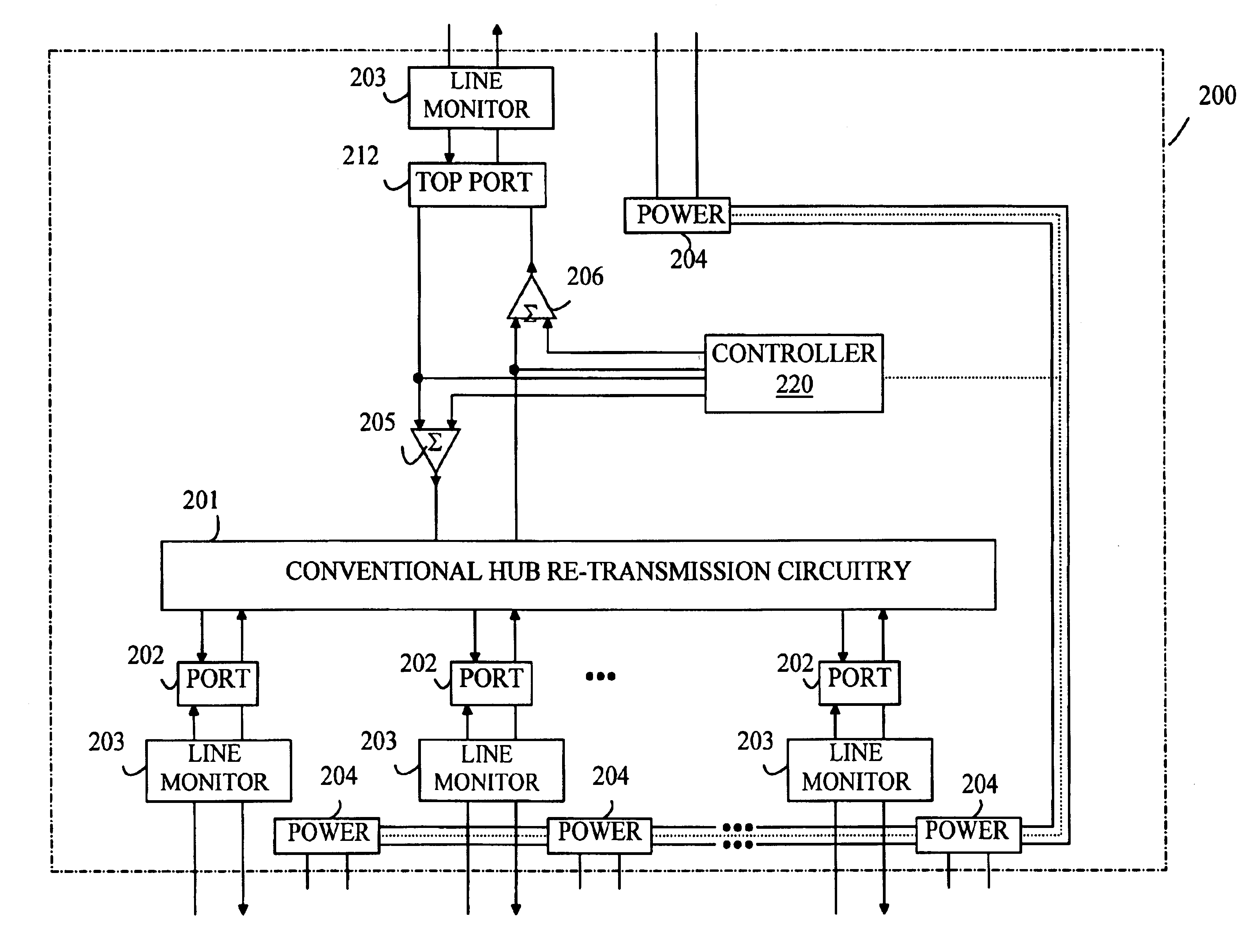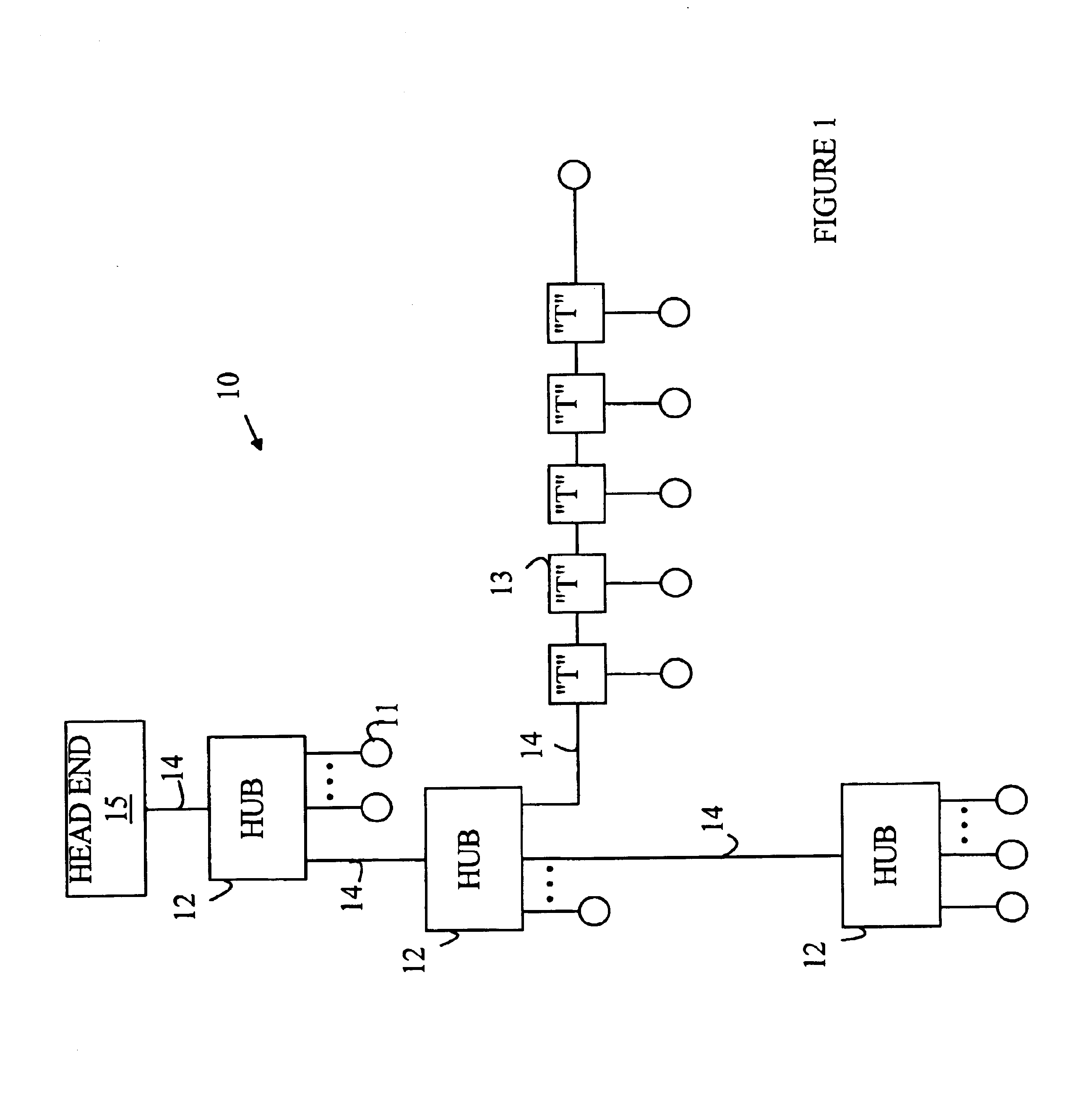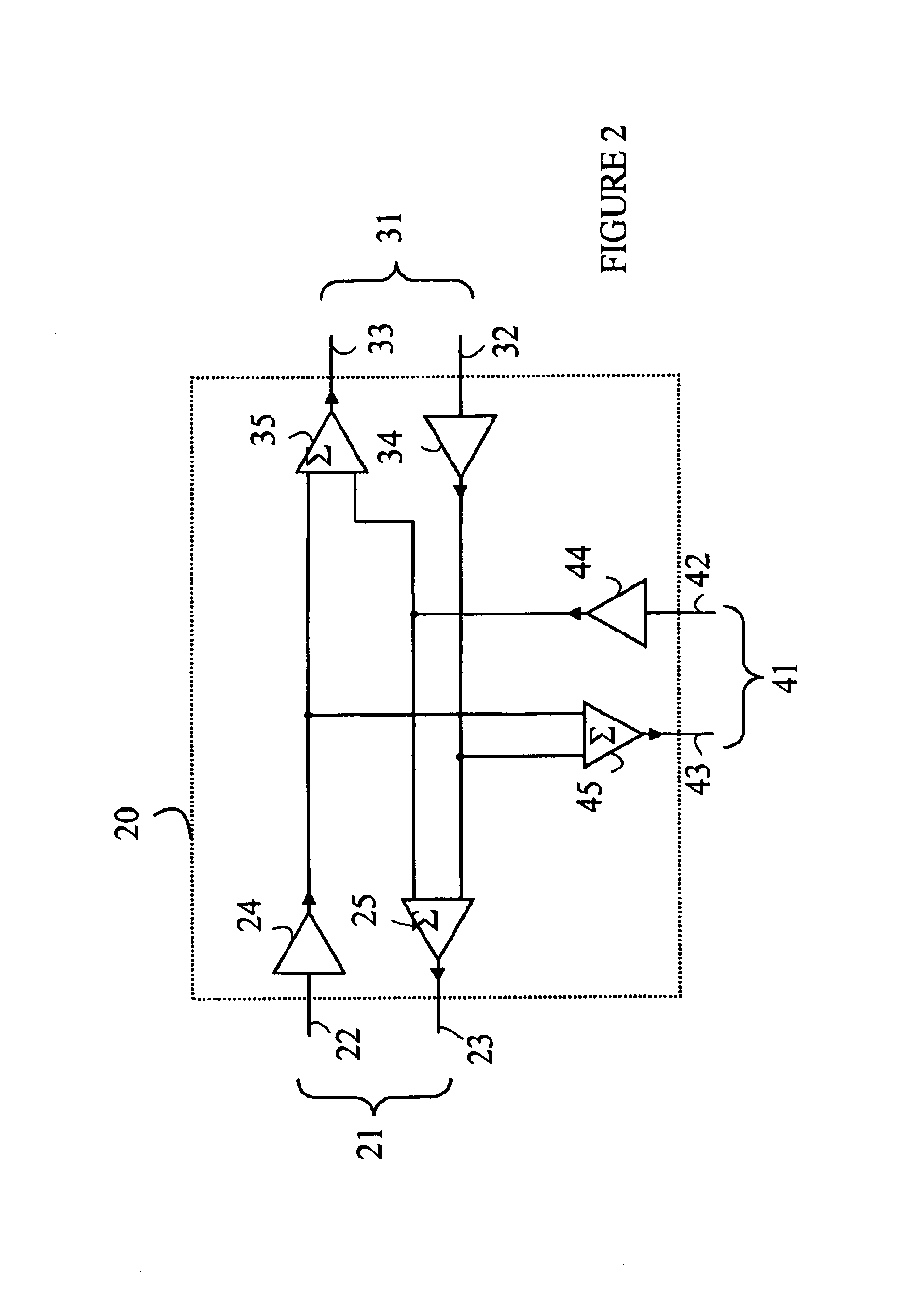Computer network adapted for industrial environments
a computer network and industrial environment technology, applied in the field of network systems, can solve problems such as delay in system repair, inability to meet the requirements of industrial applications, and inability to meet the requirements of installation and operation, and the entire network serviced by the cable may be rendered inoperabl
- Summary
- Abstract
- Description
- Claims
- Application Information
AI Technical Summary
Benefits of technology
Problems solved by technology
Method used
Image
Examples
Embodiment Construction
[0026]Refer now to FIG. 1 which is a block diagram of a network 10 according to the present invention for connecting a number of devices 11 to each other and to a head end 15 which is typically a server. Network 10 is constructed from a cable system 14 and two types of fan-out devices. Cable system 14 is based on twisted pairs for signal transmission; hence, the individual devices 11 must be connected via some form of fan-out device. The first type of fan-out device will be referred to as a hub. Hubs are shown at 12 in FIG. 1. A hub amplifies the signals, resynchronizes, and retransmits the amplified signals. As noted above, there is a limit to the number of hubs that can be connected in series, since the re-transmission function of each hub introduces “jitter” into the signals output therefrom.
[0027]To overcome the limit on the number of hubs that can be connected in series, the present invention utilizes a second type of fan-out device, referred to as a “T”. Exemplary Ts are shown...
PUM
 Login to View More
Login to View More Abstract
Description
Claims
Application Information
 Login to View More
Login to View More - R&D
- Intellectual Property
- Life Sciences
- Materials
- Tech Scout
- Unparalleled Data Quality
- Higher Quality Content
- 60% Fewer Hallucinations
Browse by: Latest US Patents, China's latest patents, Technical Efficacy Thesaurus, Application Domain, Technology Topic, Popular Technical Reports.
© 2025 PatSnap. All rights reserved.Legal|Privacy policy|Modern Slavery Act Transparency Statement|Sitemap|About US| Contact US: help@patsnap.com



